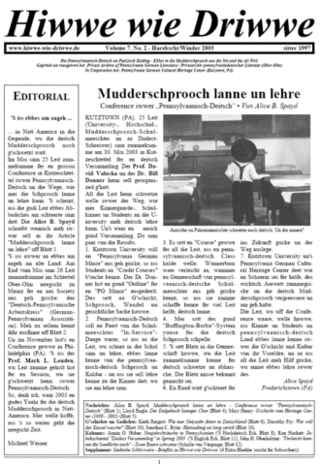
Monroe County is a county in the Commonwealth of Pennsylvania. It is located in Northeastern Pennsylvania. As of the 2020 census, the population was 168,327. Its county seat is Stroudsburg. The county was formed from sections of Northampton and Pike counties on April 1, 1836.

Berks County is a county in the Commonwealth of Pennsylvania. As of the 2020 census, the population was 428,849. The county seat is Reading, the fourth-most populous city in the state.

Kutztown is a borough in Berks County, Pennsylvania, United States. It is located 18 miles (29 km) southwest of Allentown and 17 miles (27 km) northeast of Reading. As of the 2020 census, the borough had a population of 4,162. Kutztown University of Pennsylvania is located just outside the borough limits to the southwest.

Allentown is a city in and the county seat of Lehigh County, Pennsylvania, United States. It is the third-most-populous city in Pennsylvania with a population of 125,845 as of the 2020 census and the largest city in the Lehigh Valley metropolitan area, which had a population of 861,899 and was the 68th-most populous metropolitan area in the United States as of 2020.

The Pennsylvania Dutch, also known as Pennsylvania Germans, are an ethnic group in Pennsylvania and other American states. They descend from Germans who settled in Pennsylvania during the 17th, 18th and 19th centuries, primarily from the Palatinate, and other German-speaking areas, including Baden-Württemberg, Hesse, Saxony, and Rhineland in Germany, the Netherlands, Switzerland, and France's Alsace-Lorraine region.

Pennsylvania Dutch, sometimes referred to as Pennsylvania German, is a variety of Palatine German, also known as Palatinate German or Palatine Dutch, spoken by the Pennsylvania Dutch, including the Old Order Amish, Old Order Mennonites, Fancy Dutch, and other descendants of German immigrants in the United States and Canada. There are approximately 300,000 native speakers of Pennsylvania Dutch in the United States and Canada.

Over 50 million Americans claim German ancestry, which makes them the largest single claimed ancestry group in the United States. Around 1.06 million people in the United States speak the German language at home. It is the second most spoken language in North Dakota and is the third most spoken language in 16 other states.

U.S. Route 222 is a U.S. Highway that is a spur of US 22 in the states of Maryland and Pennsylvania. It runs for 95 miles (153 km) from US 1 in Conowingo, Maryland, north to the junction of Interstate 78 (I-78) and Pennsylvania Route 309 in Dorneyville, Pennsylvania. US 222 is almost entirely in Pennsylvania, and serves as the state's principal artery between the Lancaster and Reading areas in the west and the Lehigh Valley in the east.

John Birmelin has been called the Poet Laureate of the Pennsylvania Dutch and is one of the most popular poets and playwrights in the Pennsylvania German language.

Egypt is an unincorporated community and census-designated place (CDP) in Whitehall Township in Lehigh County, Pennsylvania, United States. The population of Egypt was 2,588 as of the 2020 census.

Hiwwe wie Driwwe, which means "Hither like thither", is the title of the only existing Pennsylvania German-language newspaper.

The culture of Allentown, Pennsylvania dates back to the early 18th century settlement of the city and the surrounding Lehigh Valley, which was then part of the Province of Pennsylvania, one of the original Thirteen Colonies, by German immigrants almost exclusively affiliated the Lutheran, Moravian, and Reformed faiths, three of the most prominent Protestant denominations.

Groundhog Day is a tradition observed in the United States and Canada on February 2 of every year starting in the 16th century. It derives from the Pennsylvania Dutch superstition that if a groundhog emerges from its burrow on this day and sees its shadow, it will retreat to its den and winter will go on for six more weeks; if it does not see its shadow, spring will arrive early.
Michael Werner is a publisher of Pennsylvania German publications and writer of Pennsylvania German articles, prose and poetry. He is the founder and publisher of the only existing Pennsylvania German newspaper, Hiwwe wie Driwwe.
Don Yoder was an American folklorist specializing in the study of Pennsylvania Dutch, Quaker, and Amish and other Anabaptist folklife in Pennsylvania who wrote at least 15 books on these subjects.
Richard Druckenbrod was a 20th century Pennsylvania German language teacher, historian, pastor, and writer.
William Stahley Troxell was an American writer in the Pennsylvania German language. Born in Rising Sun, Pennsylvania, Troxell's dialect pseudonym was Pumpernickel Bill. He was a frequent author of dialect columns in the Allentown Call-Chronicle newspaper from 1925 to 1955 and served as president of the Pennsylvania German Society from 1952 to 1957. Troxell was a popular teacher of Pennsylvania German, as well as a prolific author of poems, pageants, and radio shows. He was a graduate of Kutztown State Teachers College and Muhlenberg College.
Clarence George Reitnauer was an American German Reformed layman and prominent author in the Pennsylvania German language. His dialect pseudonym was Der Shdivvel Knecht or Der Schtiwwelgnecht, and he wrote for the Pennsburg Town and Country newspaper as a columnist beginning on October 6, 1966. He was a cabinetmaker and carpenter by trade, working for the Allen Organ Company. He was also a talented illustrator and amateur printer, popular for his Pennsylvania German-themed Christmas cards. Reitnauer was a frequent preacher at church services in the Pennsylvania German dialect and a speaker at Fersommling gatherings, as well as an actor with Die Deitsche Leit Schpieler of Huff's Church, Alburtis. He was the Seisholtzville correspondent for Allentown newspapers for 30 years.












